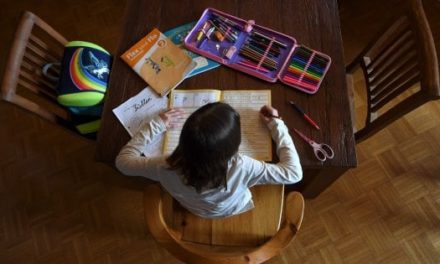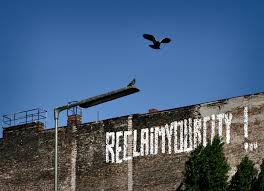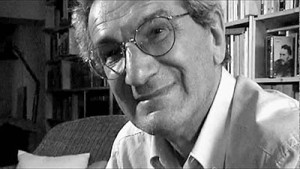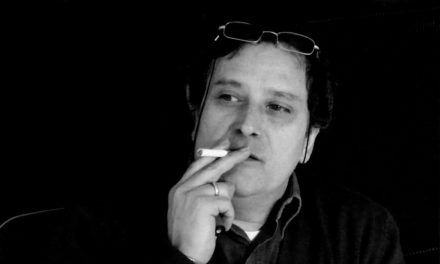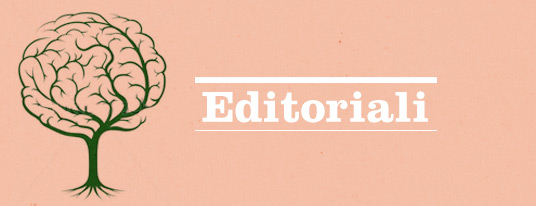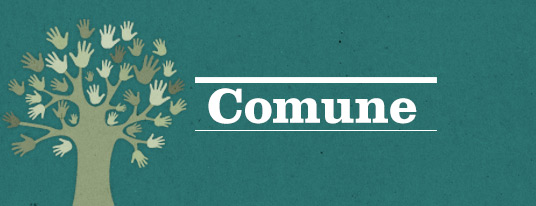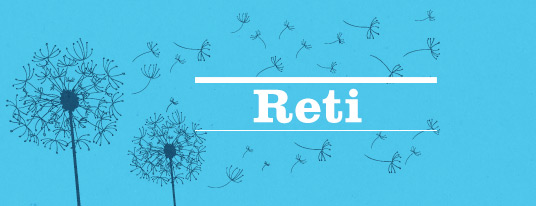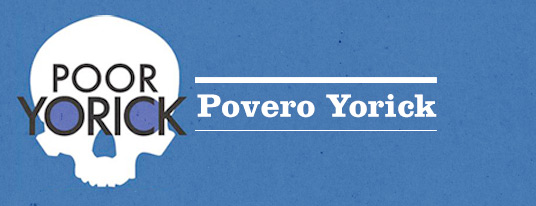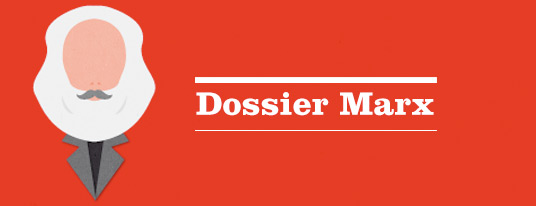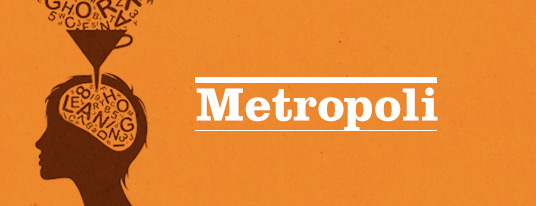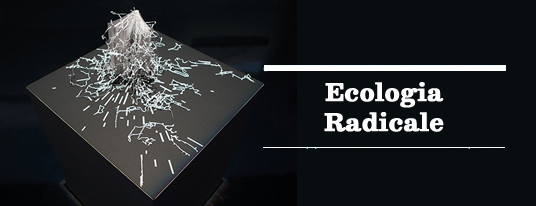by RAÚL ZIBECHI.1
15/01/2012
Chilean students question the education system as commercial and elitist because it reproduces existing social inequities and makes them worse. But they are not just asking questions: They are practicing the kind of education they have spent years dreaming about and struggling to obtain.
“If workers can manage a factory, we can manage the school,” says Cristóbal, 17, as he flashes a smile. Cristóbal is a student at the Luis Galecio Corvera A-90 high school in the Santiago borough of San Miguel. The school is among the 200 in the city that students have occupied. But on September 26, they decided to follow the example of the workers of Cerámicas Zanón, the Argentine factory workers took over and began running 10 years ago.
“Things were getting complicated because the occupation was weakening,” Cristóbal says. “It was clear to us that it wasn’t enough to just criticize our education. We had to do something more, but we didn’t know where to start until we heard that the Zanón workers were giving a talk at the University of Chile. We went to listen to them and when we came back we started running the school ourselves.”
After the takeover, a majority of students—with the enthusiastic support of many parents—returned to school. Some of the teachers joined them. “When I saw that my children were getting up and going to school without having to wake them up, that they were excited about going, I understood that they were doing something important, something that adds up to a different kind of education,” says a mother at the basketball court, where the November sun shines brightly.
Non-teaching workers took refuge in a union resolution that authorizes them to not work without school management. “The unions don’t work if there’s no boss,” Cristóbal noted with irony, prompting bursts of laughter in the courtyard. In just a few months the secondary students have learned more than they did during years of monotonous classes. They take the initiative for their studies, propose topics, show up on time, and are delighted not to wear the government-mandated school uniform they call “penguin suits.”
The student conflict was a tremendous jolt to Chilean society, as reflected even by public opinion polls. When the newspaper La Nacion asked a group of poll takers to name the best thing about 2011, 63 percent answered the student and environment mobilizations, compared with just 17 percent who chose the University of Chile soccer team, which won the South American cup at the end of November. Just 3 percent chose the Cervantes Prize, the major Spanish-language literary prize, which was awarded to writer Nicanor Parra.
Chile’s most prominent intellectuals agreed with the editor of Le Monde Diplomatique, Victor Hugo de la Fuente, who wrote: “In five months of massive mobilizations, Chilean students have changed the face of the country.” “The Manifesto of Historians [a document designed to answer some of the basic questions about the protests and signed by some of the nation’s leading intellectuals and academics],” goes even further, and maintains that “we are looking at a revolutionary, anti-neoliberal movement” that is restoring politics to civil society and re-knitting the strands of history which were interrupted by the 1973 coup.
A society in motion
Chile has not seen such a vast wave of protest since the 1980s and the massive mobilizations against the Augusto Pinochet dictatorship. The year began with solid resistance in the south, around the city of Punto Arenas, and protests against increased gas prices. The movement was so strong that the government had to negotiate with the Citizens Assembly of Magallanes and eventually reversed the price hikes.
Then in May more than 30,000 people protested in Santiago against the HidroAysén project to build five mega dams in Patagonia (a project supported by both the government and the opposition) without consulting the public. Never before had an environmental action united so many people, an indication that change was underway.
Soon after, victims of the 2010 earthquake began to demonstrate. Most of them were still homeless, spending their second winter in highly precarious conditions. As they pointed out, highways used to transport goods had been repaired, but not the homes of the poor and working class.
At the end of April, students began to mobilize. On June 30, 200,000 marched along the Alameda, Santiago’s most important thoroughfare. From then on, there were dozens of marches. “Young people were moved by a festive spirit,” according to historian Mario Garcés. There were no political party banners or uniform signs. Above all, there were no marches to familiar state symbols—Congress and the President’s Office, the usual destinations for unions and political parties.
In the following weeks, students, especially high school students, occupied the television network Chilevision to protest coverage of the mobilizations. They also occupied political party headquarters, both the ultra-rightist UDI and the opposition Socialist Party.
The most important moment occurred on August 4th. Police repression was very strong and 874 students were detained. Throughout the country people responded to the students, with cacerolazos [beating pots and pans in protest] and massive, spontaneous demonstrations in the major cities—they even staged a national strike like they did against Pinochet. President Sebastian Piñera’s popularity had fallen to 22 percent by the end of September.
But what happened in the barrios on the night of August 4th is an indication of the true strength of the movement. Camila Silva, a member of Diatriba, a “militant pedagogy” collective, lives in a lower-middle-class barrio called La Florida. “When I went out to the first caceroleo with my compañero, there were 100 people. The next time, young people from the cultural center brought their batteries and an electric guitar, soccer fans came with their Colo Colo banners and there were groups with Mapuche flags, something that you only see when there is a big win in soccer.”
Camila highlights the enthusiasm of the crowd, the way neighbors–especially women–organized spontaneously. “That organization is like a community, and it wakes up your memory. People shouting, ‘And he’s going to fall!’–the same thing they shouted during the protests against Pinochet. There was dancing until two or three in the morning, on every street corner there was a group, throughout the barrio, in many barrios of Santiago.”
“The left thought that repression had destroyed these kinds of social ties. At a certain point those relationships became invisible, but when something really big happens, they resurface, because there is still a latent memory of them. And people help each other again. The same thing happened with earthquake,” adds Cristian Olivares, another student in the Diatriba collective.
On the outskirts of the city, men and women who hadn’t marched since the “return” of democracy in 1989 took to the streets again. And they did so in the ways that those who have little often do: singing, dancing, sharing food and drink and turning a protest into a party. In fact, this was a vast mobilization against social inequality in a country that the United Nations Development Programme says is among the 15 most unequal nations in the world.
Unequal Education
Ever since the neoliberal reforms of the Pinochet regime, education has been a commercial product. Contributions from students and their families finance 75 percent of the education system; just 25 percent comes from the state. At the university level, seventy percent of students take out loans and go into debt to finance their education.
Education is also highly segmented. According to Garcés, there is one system for the rich, another for the middle class, and a third for the poor. At the secondary level (high school), 7 percent attend private schools, which cost between 300 and 500 dollars a month. The middle class (about 50 percent of all secondary students), attend semi-private or government-subsidized schools operated with a voucher system. They pay a small amount (from 40 dollars a month), and financing is shared with the state. The poorest students attend “municipal schools,” which have few resources.
The semi-private sector is dominated by a group of small businessmen who profit from state vouchers. They are authorized to have up to 45 students in a classroom, while private schools cannot have more than 35. Forty percent of those who enroll in municipal or semi-private high schools cannot comprehend what they read; 70 percent do not score high enough on entrance exams to attend university.
At the university level, social inequality translates into indebtedness; there is no free, universal access to a university education. The deregulation of the system during the military dictatorship (1973 – 1980) also led to an increase in the number of private universities. There are now 60 private institutions, where the cost of a degree varies between $150 a month for social sciences and $1,200 a month for engineering or medicine. To finance their educations students have to obtain bank loans and go into debt.
Faced with this situation, students are proposing that natural resources are nationalized and used to finance public education. There is a precedent: Pinochet did not privatize the Chilean state copper company, Codelco, and by law part of its profits are used to finance the armed forces. Not surprisingly the student movement has support among the middle class, even in the some of the more well-to-do neighbors of Santiago.
Student control of schools
A half hour from Santiago, the borough of San Miguel reflects the various levels of “middle class”: from those who live in high-rises along broad avenues to those who live in precarious little houses. Formerly one of the largest boroughs of the city, its poorest barrios (such as La Victoria) have been torn away in an effort to turn San Miguel into a strictly middle class neighborhood. Nevertheless, it continues to be plagued with social contrasts.
Secondary School A-90 started the year with 179 students, but a decade ago there were 4,000. Students left to go to subsidized schools, which are reputed to offer a better education, although their evaluations suggest otherwise. The borough’s socialist mayor, Julio Palestro, is one of the mayors who have supported the privatization of education. In 2009 he closed a public school where 2,000 students were enrolled.
At the assembly in the gymnasium young people explain that their school ranks number 14 on the list for “academic risk.” Asked what that means, they smile: “It refers to the risk that we will become criminals.” Most of their parents work for little more than minimum wage (180,000 Chilean pesos, around $350), primarily as construction laborers.
Maybe that explains why the management is obsessed with discipline. “It’s as if we were locked up, this is practically a jail,” says Yergo, a third-year student. Camilo, a second-year student, is happy not having to wear a uniform. “It’s like a military doctrine, everyone with their crew cuts, their little ties, shirt tucked in. Don’t do this, don’t do that. And now [that the students run the school], you can just be who you are. You can just freely express yourself, you come here to be educated, not to be militarized.”
“The assembly is the control center,” Cristóbal explains. “All students participate and at times it’s open to teachers. We have watch duty and volunteers come in to make meals. Teachers teach, but they also learn from the students. At the beginning we had classes subject by subject, but later we saw that parceling out knowledge wasn’t the real way to learn, and we all got together for each subject. Some [students] explained to others, and the education became cooperative. That changes the way you relate to the subject and to the school.”
Just as workers who take over a factory change the way work is organized, students who took over their schools changed the “curricular boundaries.” Students need to know their rights, says Cristóbal, so they offer classes on the Constitution. “Philosophy, for example, lends itself to analyzing mobilizations and what is happening in the world; we begin to see that students work better if they are more interested.”
Juan Francisco, a philosophy teacher, agrees with his student. “All the student discussions have led them to reflect on the structure of power in Chile.” That’s why they analyze the constitution in his classes. Often they hold workshops, which furthers participation. Weekly assemblies have been incorporated into the curriculum.
The relationships between students and teachers have shifted. As hierarchies melted, relationships became more cooperative and supportive. In the classroom, they sit in a circle. The teacher is someone who helps, but is not above the rest. Eliana Lemus, a teacher of biology, chemistry, and physics, and principal of the school, maintains that discipline is much greater than it used to be, perhaps because it is not imposed and there is a desire to be together and share the experience.
One of the most notable accomplishments of the student movement is the effect it has had on the barrios, where it has increased social organization. At public school A-90, the parents association now supports the student takeover and control of the school. Cacerolazos in San Miguel led to “territorial assemblies,” where neighbors go to discuss problems in the barrio, as well as general problems such as education. Similar groups have been reported in other Santiago barrios, with up to 200 neighbors in attendance.
But not everything has been positive. Several teachers say they have been threatened and beaten by colleagues who do not agree with the takeover. The socialist mayor, a strong opponent of the movement, beat up Cristóbal Espinoza, a student and spokesman for A-90.
The future of those without a future
The 2011 student movement is the third such movement Chile has experienced in the last decade. In 2000 secondary students took to the streets to demand transportation, in what was called the “mochilazo” or the “backpackers’ movement.” In 2006 there were large demonstrations and schools were occupied, leading to the resignation of the Minister of Education and a partial modification of the education law.
The “Penguin Revolution,” named for the official school uniform of the protesting junior high students, was the first successful movement of the democracy. It was as massive as it was innovative; decisions were made in assemblies, with direct participation and a lack of hierarchy. But for Mario Garcés, “the 2006 secondary school movement was co-opted or trapped in the halls of La Moneda [the seat of the national government] and fell through institutional cracks.” President Michelle Bachelet created a commission of experts, with little student participation. They drafted a new law, but, nevertheless, did not remove the profit motive from the educational system.
This time around, however, the movement is not limited to students, nor is it exclusively focused on education. Chile is going through a crisis of legitimacy brought on by the inability of the political system inherited from the dictatorship to meet social demands. As the “Manifesto of Historians” points out, society is debating again, questioning top-down authority and enacting “forms of direct and decentralized democracy.”
This “politics of the streets” shows a “vocation for power” that questions the way the transition to democracy has taken place, a transition “alienated from social movements,” according to Garcés. Not only are people returning to the streets, they are also doing another kind of politics, broadening the movement, reaching out to the poor in ways that the movement in 2006 did not.
Finally, new practices form new people. Marcela Moya, an English teacher at A-90, points out, “the articulate fluidity the students have when they speak out, their self-discipline.” This is a personal evolution that is not all about the individual, but instead is collective and political. That suggests changes that are far more profound than what we see on the surface: “This movement has given rise to individuals who I know are going to be 100 percent committed to the society of the future, because they themselves have made that future possible.”
Raúl Zibechi is an international analyst for Brecha of Montevideo, Uruguay, lecturer and researcher on social movements at the Multiversidad Franciscana de América Latina, and adviser to several social groups. He is a columnist and also writes the monthly “Zibechi Report” for the Americas Program.
Translation: Barbara Belejack
Resources
Diatriba, revista de pedagogía militante, No. 1, November 2011.
Entrevistas a estudiantes del liceo A-90, Santiago, November 30, 2011.
Entrevista al Colectivo Diatriba, Santiago, 30, 1 de diciembre de 2011.
Mario Garcés, “El movimiento estudiantil y la crisis de legitimidad de la política chilena”, LOM, Santiago, July 2011.
“Otro Chile es posible”, Le Monde Diplomatique, Santiago, 2011.
“Trazas de utopía. La experiencia autogestionaria de cuatro liceos chilenos durante
2011”, OPECH/Colectivo Diatriba/Quimantú, Santiago, 2011.


